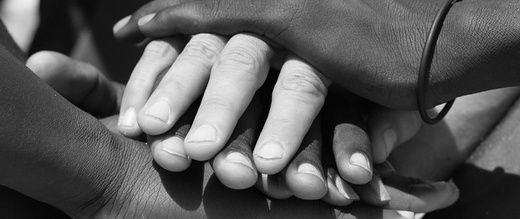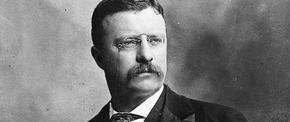The views expressed in our content reflect individual perspectives and do not represent the authoritative views of the Baha'i Faith.
As to racial prejudice, the corrosion of which, for well-nigh a century, has bitten into the fiber, and attacked the whole social structure of American society, it should be regarded as constituting the most vital and challenging issue confronting the Baha’i community at the present stage of its evolution. The ceaseless exertions which this issue of paramount importance calls for, the sacrifices it must impose, the care and vigilance it demands, the moral courage and fortitude it requires, the tact and sympathy it necessitates, invest this problem, which the American believers are still far from having satisfactorily resolved, with an urgency and importance that cannot be overestimated. White and Negro, high and low, young and old, whether newly converted to the Faith or not, all who stand identified with it must participate in, and lend their assistance, each according to his or her capacity, experience, and opportunities, to the common task of fulfilling the instructions, realizing the hopes, and following the example, of Abdu’l-Baha. Whether colored or noncolored, neither race has the right, or can conscientiously claim, to be regarded as absolved from such an obligation, as having realized such hopes, or having faithfully followed such an example. A long and thorny road, beset with pitfalls, still remains untraveled, both by the white and the Negro exponents of the redeeming Faith of Baha’u’llah. – Shoghi Effendi, from a letter written to the American Baha’i community, December 25, 1938, Advent of Divine Justice, pp. 33–34.
In the previous essay in this series, we saw the White Baha’i Doris McKay visit Henderson Business College and break bread with its owner the Black Baha’i Professor Henderson, with the Dean, and with other staff as well as students. Their action quietly, yet dramatically, broke the “color line” in Memphis, Tennessee. That act constituted a brave exception to the Jim Crow law of “separate but equal” and a radical departure from the self-segregation of the races, the natural corollary of legalized segregation.
Earlier, back in November, 1921, Martha Root, a well-known Baha’i journalist, spoke several times at Henderson Business College.
 Nearly twenty years after Martha Root’s visit, Henderson Business College would soon become the place for another historical first, the consolidation of the Memphis Baha’i community. That consolidation and integration led to the formation of its first Spiritual Assembly, a local Baha’i administrative council, elected by plurality vote by the adult Baha’i community in Memphis.
Nearly twenty years after Martha Root’s visit, Henderson Business College would soon become the place for another historical first, the consolidation of the Memphis Baha’i community. That consolidation and integration led to the formation of its first Spiritual Assembly, a local Baha’i administrative council, elected by plurality vote by the adult Baha’i community in Memphis.
The problem? The White Baha’is, for the most part, were still steeped in the mores and folkways of the old South. The transition took time—and leadership—in order to transcend the past and establish the inevitable future in the tentative present. As Doris McKay recounts, the White Baha’is understood the Baha’i principles of racial equality and interracial harmony, but were not quite ready to make the quantum leap:
On Friday, February 7, I went to the Feast [the monthly Baha’i worship and community meeting]. It was a White one, of course, but it signaled a turn of events. I was given the floor and asked to talk on Baha’i Administration. The people were attentive, intellectually mature and had no difficulty with the words I was using. For some, however, the concepts later proved difficult to swallow. – Doris McKay, with Paul Vreeland, Fires in Many Hearts, p. 298.
McKay succeeded in persuading the group that if, by April 21, 1921, the Memphis Baha’i community—which consisted of both White Baha’is and Black Baha’is—reached the number of at least nine adult believers or more, they would hold an election to form a local consultative council:
I told them that if there were nine eligible Baha’is at the beginning of the administrative year, April 21st, the formation became a necessity and that the National Assembly would expect it. … Someone then asked, “Could we hold Feast separate from the Colored members?” … The consultation pursued this point, cautiously and gently and to the extent that they were able to think it through for themselves. – Ibid., p. 299.
But this could only happen if the Memphis Baha’i community was “consolidated,” i.e. integrated. Doris McKay explained to the White Baha’is:
The concept foremost of this discussion was this: that … the Feast [is] an inclusive community meeting. It is through this institution that we demonstrate the oneness of mankind to a skeptical world made up of warring nations. It is through the Feast that we prove that we are not just one more selective society, but a unit truly composed of diverse elements which have learned to function together. In its spirit, the “breaking of bread” together, with a feeling of love and fellowship, becomes a sacrament, something which would represent the appearance of the New Day in our Southern states. – Ibid., p. 299.
Much to Doris’ surprise and tentative delight, the White Baha’is finally accepted the truth of the matter and expressed willingness to make the change:
Then I went around and asked each member, one by one, for an expression of feeling. Clara Keller and Johanna Zimmerman were the first to respond. “If we’re going to call ourselves Baha’is, then let us BE Baha’is.” – Ibid., p. 299.
And so they resolved that, if the community reached a total of nine Baha’is (White and Black) by April 21, they would schedule an interracial meeting and election. Despite this apparent breakthrough, some White Baha’is still had lingering doubts. McKay then relates how three of the White Baha’is later had profound misgivings. In the wake of so divided an otherwise close-knit White Baha’i community, McKay temporarily “dropped the idea of hosting the interracial Feast.” So Doris McKay “went to the Black Baha’is and told them that I had been unable to arrange it.” This happened next:
On March 2nd [1941], we held another White Feast. We sat there bright and cordial, but as dead souls avoiding argumentative issues. The atmosphere would not lift. – Ibid., p. 304.
Shortly before, Doris met with two members of the Memphis Black Baha’i community, Dr. Watkins and his wife, referred to simply as Mrs. Watkins. Of this encounter, McKay wrote:
This sense of belonging to the “untouchables” does devastating things to the Colored psychology—Jim Crow regulations and all the rest! It is insidious, takes away self-respect, and the sense of responsibility that is part of self-respect and personal validity. – Ibid., p. 298.
Stay tuned for the rest of this remarkable story.

















Comments
Sign in or create an account
Continue with Facebookor